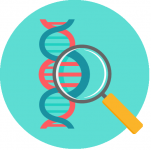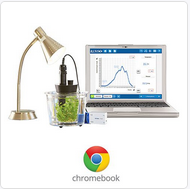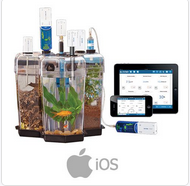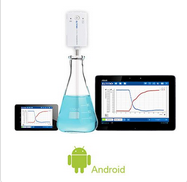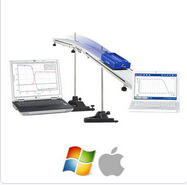

Physics (20 & 30)
Physics 20 Key Concepts
- Unit A: Kinematics
- scalar and vector quantities
- uniform and uniformly accelerated motion
- two-dimensional motion
- Unit B: Dynamics
- Newton’s laws of motion
- inertia
- static and kinetic friction
- gravitational force
- Newton’s law of universal gravitation
- gravitational field
- Unit C: Circular Motion, Work and Energy
- uniform circular motion
- mechanical energy
- conservation of mechanical energy
- work-energy theorem
- power
- Unit D: Oscillatory Motion and Mechanical Waves
- oscillatory motion
- simple harmonic motion
- oscillating spring, pendulum
- mechanical and acoustic resonance
- mechanical waves – longitudinal and transverse
- reflection
- interference
- Doppler effect
Physics 30 Key Concepts
- Unit A: Momentum and Impulse
- impulse and momentum
- Newton’s laws of motion
- elastic and inelastic collisions
- Unit B: Forces and Fields
- electric charge and conservation of charge
- Coulomb’s law
- electric and magnetic fields
- electric potential difference
- charge quantization – Millikan’s experiment
- electromagnetic induction
- Unit C: Electromagnetic Radiation
- speed and propagation of EMR
- reflection, refraction, diffraction, and interference
- total internal reflection and Snell’s law
- photoelectric effect
- Compton effect
- Unit D: Atomic Physics
- charge-to-mass ratio (Thomson’s experiment)
- spectra: continuous, line emission and line absorption
- energy levels (states)
- de Broglie hypothesis
- quantum mechanical model
- half-life, nuclear decay and reactions

Simply check the box at the end of each row, adjust to your desired quantity and then click the add selected to cart button at the bottom.
| Image | Name | Description | Price | Buy |
|---|
Simply check the box at the end of each row, adjust to your desired quantity and then click the add selected to cart button at the bottom.
| Image | Name | Description | Price | Buy |
|---|
Simply check the box at the end of each row, adjust to your desired quantity and then click the add selected to cart button at the bottom.
| Image | Name | Description | Price | Buy |
|---|
Simply check the box at the end of each row, adjust to your desired quantity and then click the add selected to cart button at the bottom.
| Image | Name | Description | Price | Buy |
|---|
Simply check the box at the end of each row, adjust to your desired quantity and then click the add selected to cart button at the bottom.
| Image | Name | Description | Price | Buy |
|---|
Biology (20 & 30)
Biology 20 Key Concepts
- Unit A: Energy and Matter Exchange in the Biosphere
- biosphere
- energy, biomass and numbers
- carbon, nitrogen, oxygen and phosphorus cycles
- water properties
- Unit B: Ecosystems and Population Change
- ecosystems
- biotic/abiotic characteristics
- adaptation and variation
- population, natural selection, species
- Unit C: Photosynthesis and Cellular Respiration
- absorption of light by pigments
- light-dependent and independent reactions
- glycolysis, Krebs cycle, and electron transport systems
- aerobic and anaerobic respiration
- Unit D: Human Systems
- structure and function of major systems: respiratory, digestive, excretory, circulatory and motor
- chemical nature of carbohydrates, proteins, lipids
- chemical and physical digestion, digestive enzymes
- gas exchange
- composition of blood
Biology 30 Key Concepts
- Unit A: Nervous and Endocrine Systems
- neurons and nerve impulse transmission
- central and peripheral nervous systems
- reflex arcs, sensory receptors
- endocrine system and hormones
- Unit B: Reproduction and Development
- reproductive systems, hormones and technologies
- embryonic and fetal development
- parturition and lactation
- Unit C: Cell Division, Genetics and Molecular Biology
- cell cycle, mitosis and meiosis
- alternation of generations, Mendel’s laws of heredity
- monohybrid, dihybrid and sex-linked inheritance
- incomplete dominance and codominance
- model of DNA, replication, transcription, translation, and mutations
- genetic engineering
- Unit D: Population and Community Dynamics
- Hardy-Weinberg principle
- gene pool, natural selection
- symbiotic relationships and interactions
- population size: natality, mortality, immigration, emigration
- population growth rate and growth curves

Simply check the box at the end of each row, adjust to your desired quantity and then click the add selected to cart button at the bottom.
| Image | Name | Description | Price | Buy |
|---|
Simply check the box at the end of each row, adjust to your desired quantity and then click the add selected to cart button at the bottom.
| Image | Name | Description | Price | Buy |
|---|
Chemistry (20 & 30)
Chemistry 20 Key Concepts
- Unit A: The Diversity of Matter and Chemical Bonding
- chemical, ionic, and covalent bonds
- electronegativity and polarity
- intramolecular and intermolecular forces, hydrogen bond
- VSEPR theory
- Unit B: Forms of Matter: Gases
- C and K temperature scales, absolute zero
- real and ideal gases
- law of combining volumes
- Charles’, Boyle’s and ideal laws
- standard temperature and pressure
- Unit C: Matter as Solutions, Acids and Bases
- homogeneous mixtures
- solubility electrolyte/nonelectrolyte
- concentration and dilution
- strong and weak acids and bases
- monoprotic/polyprotic acids and bases
- Arrhenius theory
- indicators
- hydronium (pH) and hyroxide (pOH) ions
- neutralization
- Unit D: Quantitative Relationships in Chemical Changes
- reaction stoichiometry
- precipitation
- limiting and excess reagents
- actual, theoretical and percent yield
- titration and curves for strong acids and bases
- end point vs. equivalence point
Chemistry 30 Key Concepts
- Unit A: Thermochemical Changes
- Hess’ law
- molar enthalpy
- activation energy and catalysts
- calorimetry
- fuels and energy efficiency
- Unit B: Electrochemical Changes
- oxidation and reduction
- oxidizing and reducing agents
- redox reactions, half-reactions
- voltaic and electrolytic cells
- electrolysis
- Faraday’s law
- corrosion
- Unit C: Chemical Changes of Organic Compounds
- organic compounds and reactions
- structural formulas and isomers
- monomers and polymers
- aliphatic and aromatic compounds
- saturated/unsaturated hydrocarbons
- functional groups
- Unit D: Chemical Equilibrium Focusing on Acid-Base Systems
- chemical equilibrium systems
- Le Chatelier’s principle
- acid-base equilibrium
- Bronsted-Lowry acids and bases
- titration curves
- conjugate pairs of acids and bases
- amphiprotic substances
- buffers and indicators

Simply check the box at the end of each row, adjust to your desired quantity and then click the add selected to cart button at the bottom.
| Image | Name | Description | Price | Buy |
|---|
Simply check the box at the end of each row, adjust to your desired quantity and then click the add selected to cart button at the bottom.
| Image | Name | Description | Price | Buy |
|---|
Simply check the box at the end of each row, adjust to your desired quantity and then click the add selected to cart button at the bottom.
| Image | Name | Description | Price | Buy |
|---|
Extra Resources
Download SPARKvue Software for Free
SPARKvue makes data collection, analysis, and sharing quick and easy on every platform. Compatible with all of PASCO’s Wireless and PASPORT Sensors, students can quickly set up their lab, or use a built-in Quick Start Lab to begin collecting data immediately. SPARKvue is a great fit for all science and grade levels!
Check out the videos below for details on SPARKvue’s functions, features, and various applications!
SPARKvue is free to download and use on iPads, iPhones, Android tablets and phones, and on Chromebooks, or you can purchase a site license for use on Mac and Windows computers! What’s the best part? User experience is the same – regardless of the platform!


